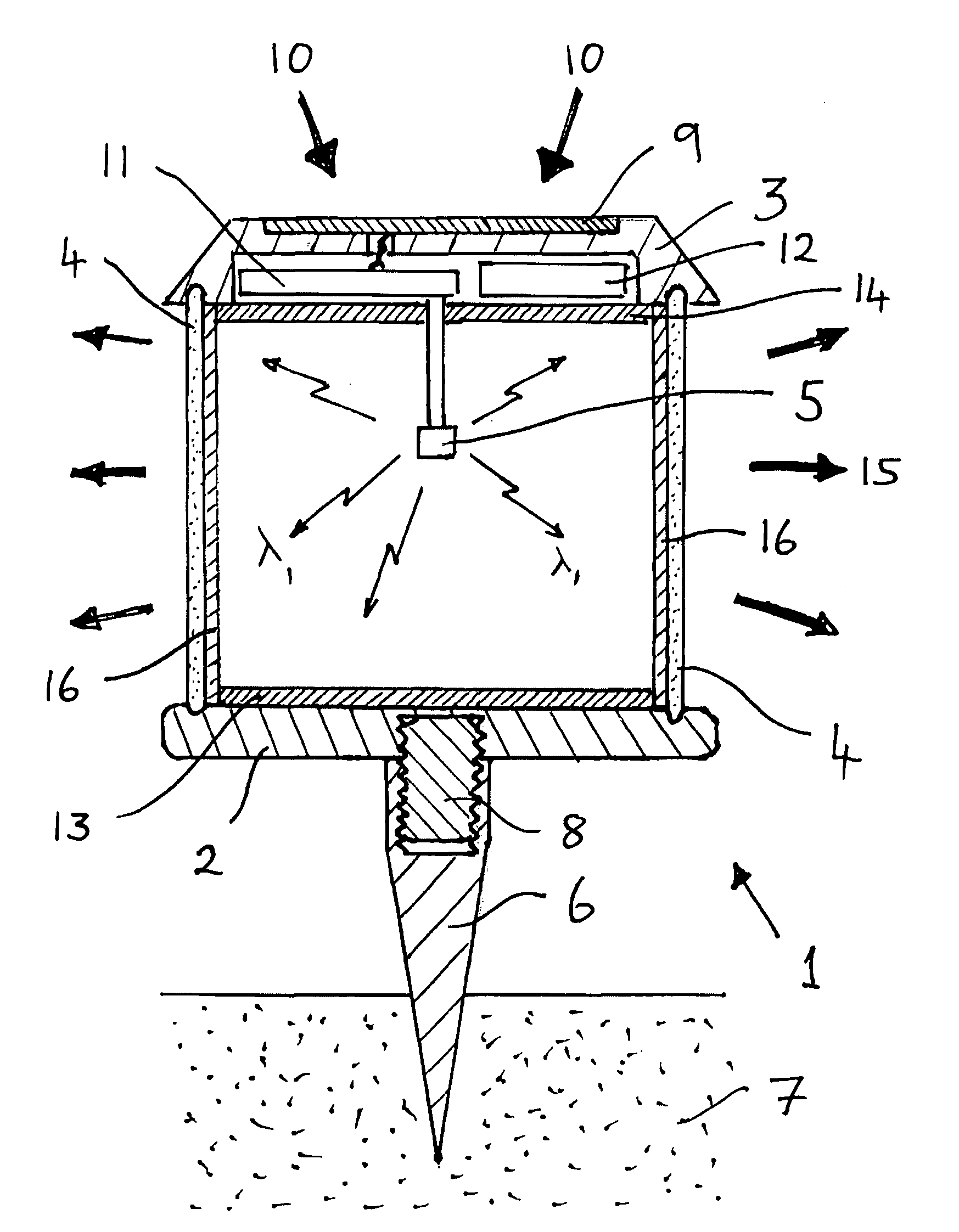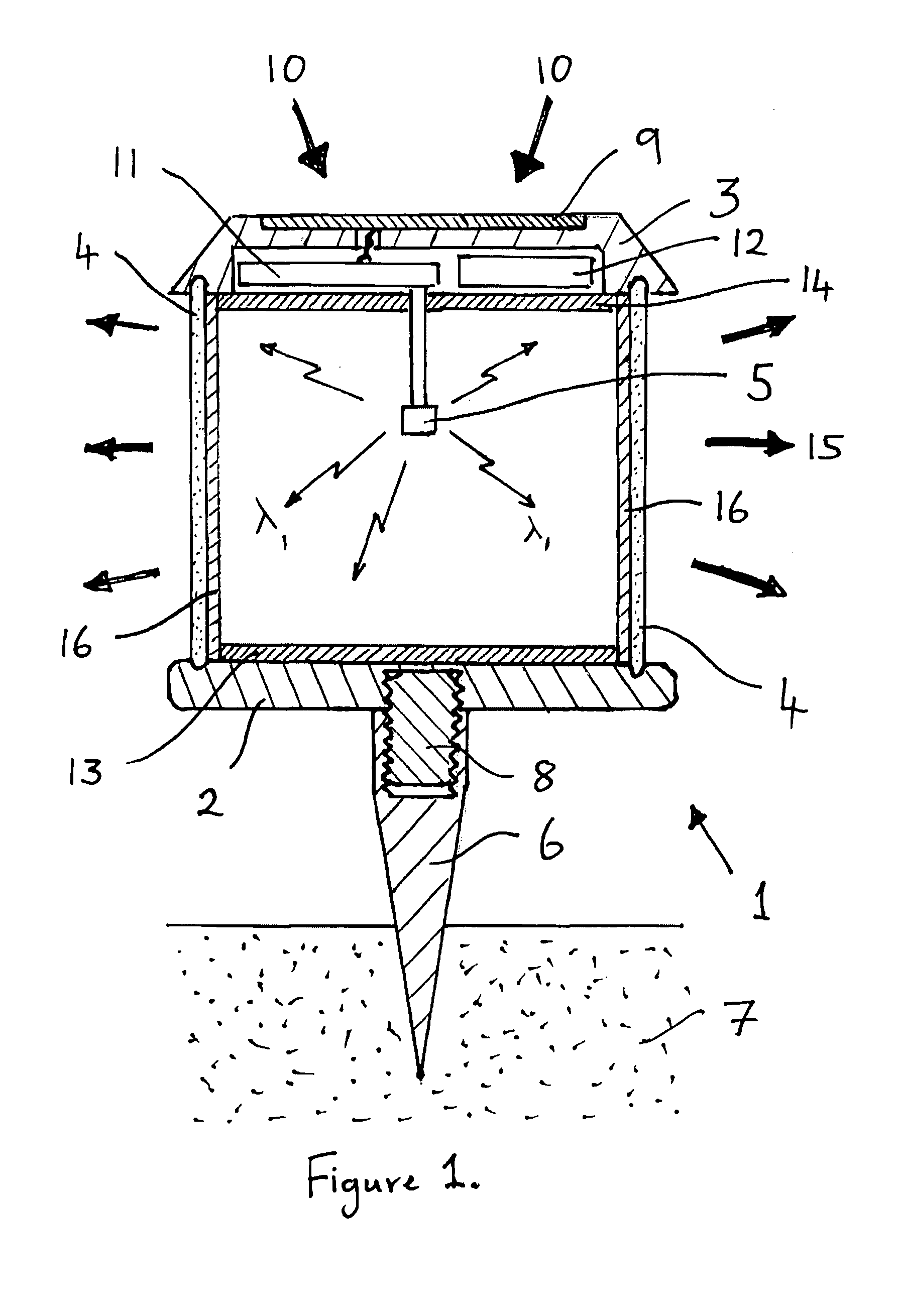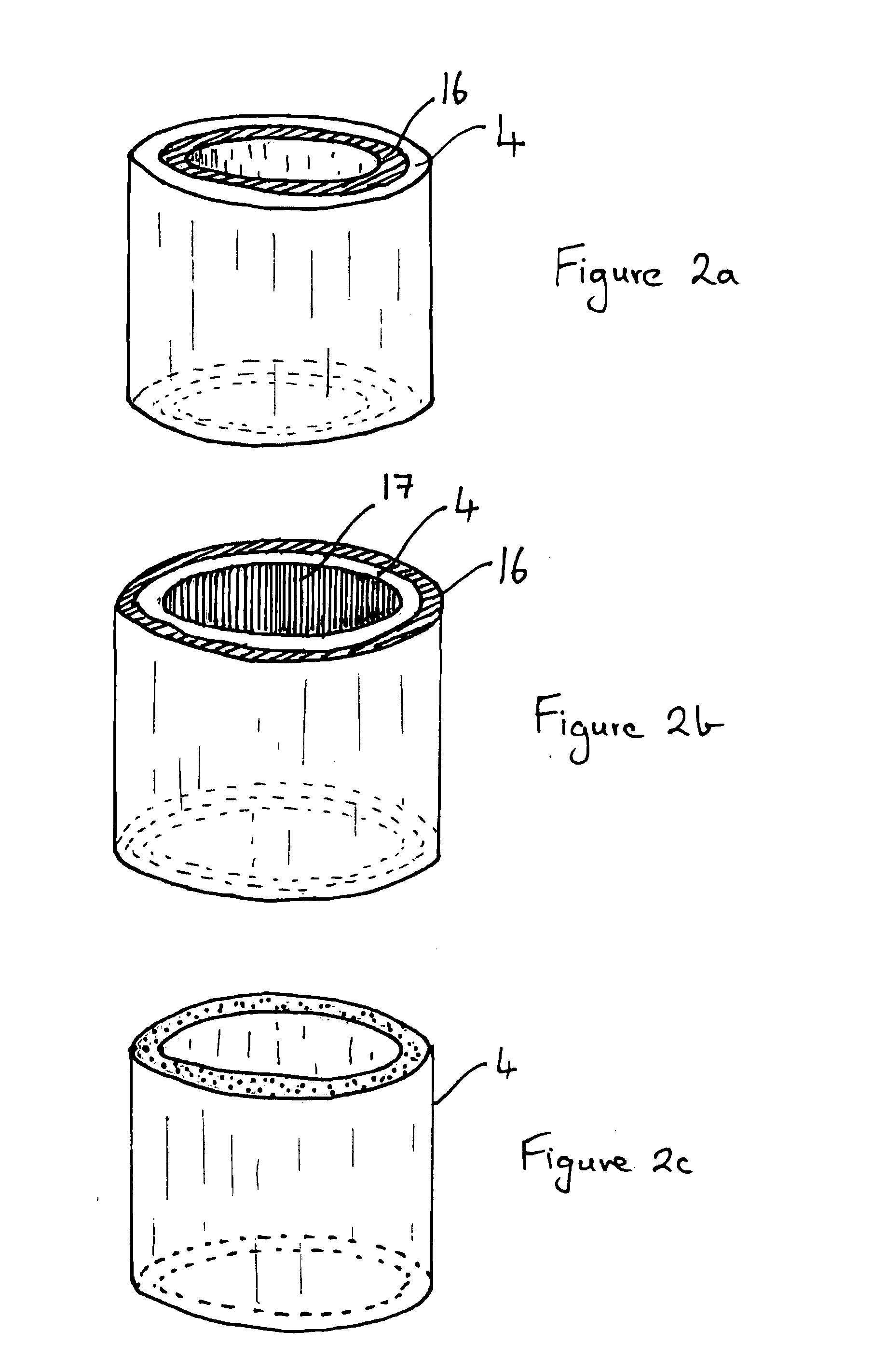Light emitting diode (LED) based lighting systems
a technology of light emitting diodes and lighting systems, applied in lighting support devices, lighting and heating apparatuses, with built-in power, etc., can solve the problems of limited system design of led lighting fixtures, achieve easy fabrication, increase the intensity of output light, and dissipate heat generated by excitation sources
- Summary
- Abstract
- Description
- Claims
- Application Information
AI Technical Summary
Benefits of technology
Problems solved by technology
Method used
Image
Examples
Embodiment Construction
[0028]Referring to FIG. 1 there is shown a schematic cross-sectional representation of a lighting system in accordance with the present invention which comprises an outdoor lighting fixture or solar powered garden lantern 1. The lantern 1 is generally cylindrical in form and comprises a circular base 2, a circular top 3, a translucent hollow cylindrical shade 4 disposed between the base and top and a radiation source 5 mounted within the volume defined by the shade 4 in conjunction with the base 2 and top 3. A spike 6 is secured to on an underside of the base 2 enabling the lantern 1 to be installed by inserting the spike 6 into the ground 7. In the embodiment illustrated the spike 6 is removeably secured to the base 2 by a threaded stud 8 enabling the lantern 1 to be secured to fixtures other than the spike such as a wall bracket etc.
[0029]In an outer surface of the top 3 there is provided a solar cell, photovoltaic cell, 9 for operating the lantern from incident ambient light 10. ...
PUM
| Property | Measurement | Unit |
|---|---|---|
| distance | aaaaa | aaaaa |
| wavelength | aaaaa | aaaaa |
| excitation radiation of wavelength | aaaaa | aaaaa |
Abstract
Description
Claims
Application Information
 Login to View More
Login to View More - R&D
- Intellectual Property
- Life Sciences
- Materials
- Tech Scout
- Unparalleled Data Quality
- Higher Quality Content
- 60% Fewer Hallucinations
Browse by: Latest US Patents, China's latest patents, Technical Efficacy Thesaurus, Application Domain, Technology Topic, Popular Technical Reports.
© 2025 PatSnap. All rights reserved.Legal|Privacy policy|Modern Slavery Act Transparency Statement|Sitemap|About US| Contact US: help@patsnap.com



